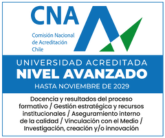Juliana M. Vaz(a, d), Thiago B. Taketa(a), Jacobo Hernandez-Montelongo(b, c) , Pascale Chevallier(d), Monica A. Cotta(c), Diego Mantovani(d), Marisa M. Beppu(a).
(a) Departamento de Engenharia de Materiais e Bioprocessos – DEMBio, Faculdade de Engenharia Química, Universidade Estadual de Campinas, Campinas, SP, Brazil.
(b) Departamento de Ciencias Matemáticas y Físicas, Facultad de Ingeniería, Universidad Católica de Temuco, Temuco, La Araucanía, Chile.
(c) Departamento de Física Aplicada, Instituto de Física Gleb Wataghin, Universidade Estadual de Campinas, Campinas, SP, Brazil.
(d) Lab. For Biomaterials and Bioengineering, Department of Mining, Metallurgical and Materials Engineering & CHU de Quebec Research Centre, Laval University, Quebec City, QC, Canada.
APPLIED SURFACE SCIENCE
Volumen: 445 Páginas: 478-487
DOI: https://doi.org/10.1016/j.apsusc.2018.03.110
Fecha de publicación: 17 de Marzo de 2018
Abstract
Chitosan is a biopolymer with antibacterial properties, which are dependent on its molecular weight (Mw) and its degree of deacetylation (DDA). When grafted on surfaces as a coating, chitosan antibacterial efficiency is also dependent on the polymer chain conformation on the surface, as the amine groups, responsible of the antibacterial effect, should be available for contact with bacteria. To investigate this behavior, chitosans with different Mw were grafted onto plasma aminated surfaces through three different spacers: glutaric anhydride (GA), poly(ethylene–glycol) bis(carboxymethyl) ether (PEGb), and poly(ethylene-alt-maleic anhydride) (PA). The grafting efficiency was evaluated by X-ray Photoelectron Spectroscopy (XPS), contact angle and Rose Bengal test, while morphological features were assessed by profilometry analyses. Results evidenced a clear influence of the anchor arm length and of the Mw of chitosan both on the grafting efficiency and on the antibacterial behavior. PA CHIMW surface exhibited a better antibacterial response compared to GA and PEGb, which could be correlated to a denser coating coverage as seen by XPS and profilometry results. Further, PA CHIMW coating displayed a higher amine density, thus promoting the interaction with the bacteria cell wall. Based on these results, chitosan-based coatings can then be extended to a wide range of antibacterial applications.



